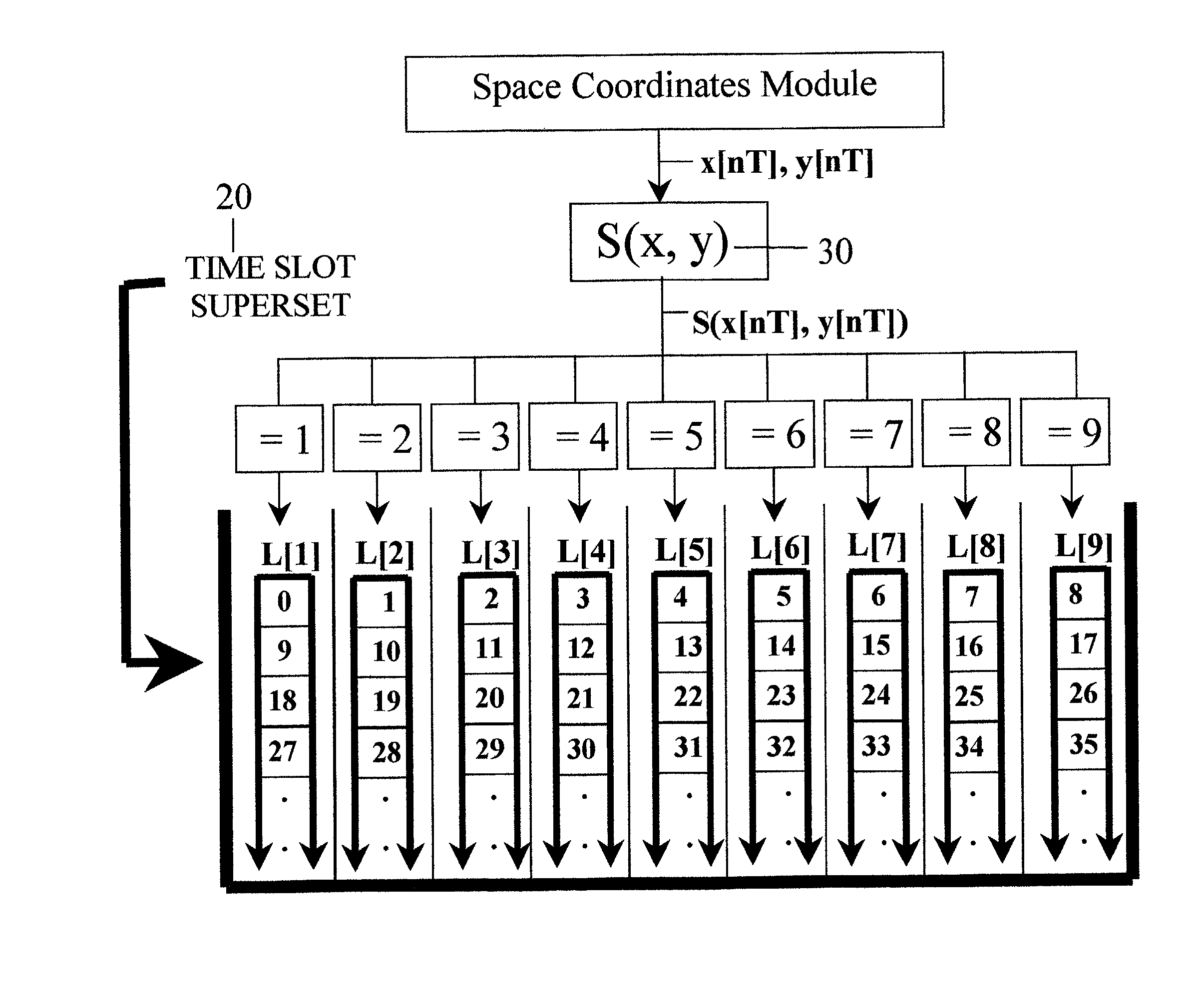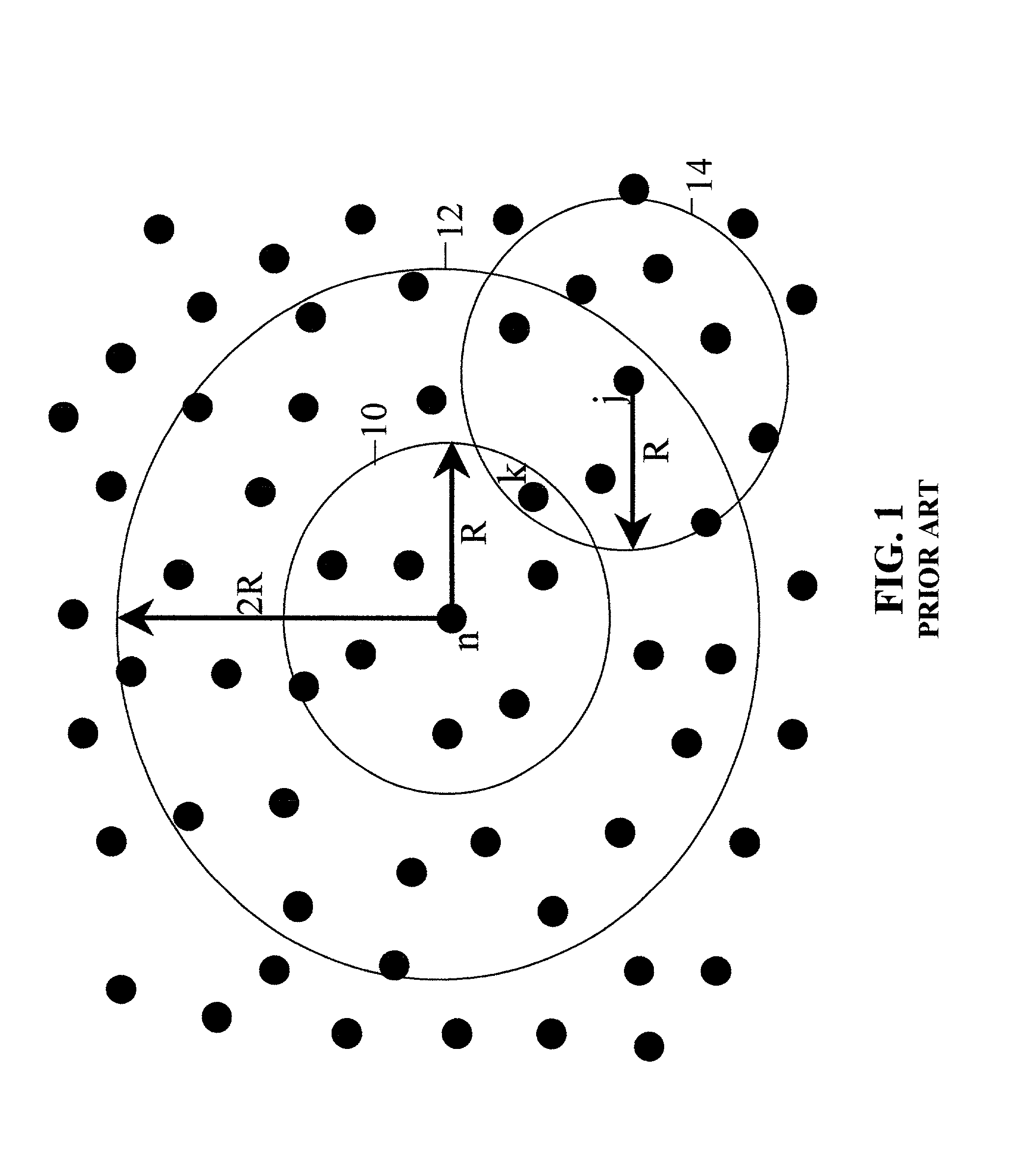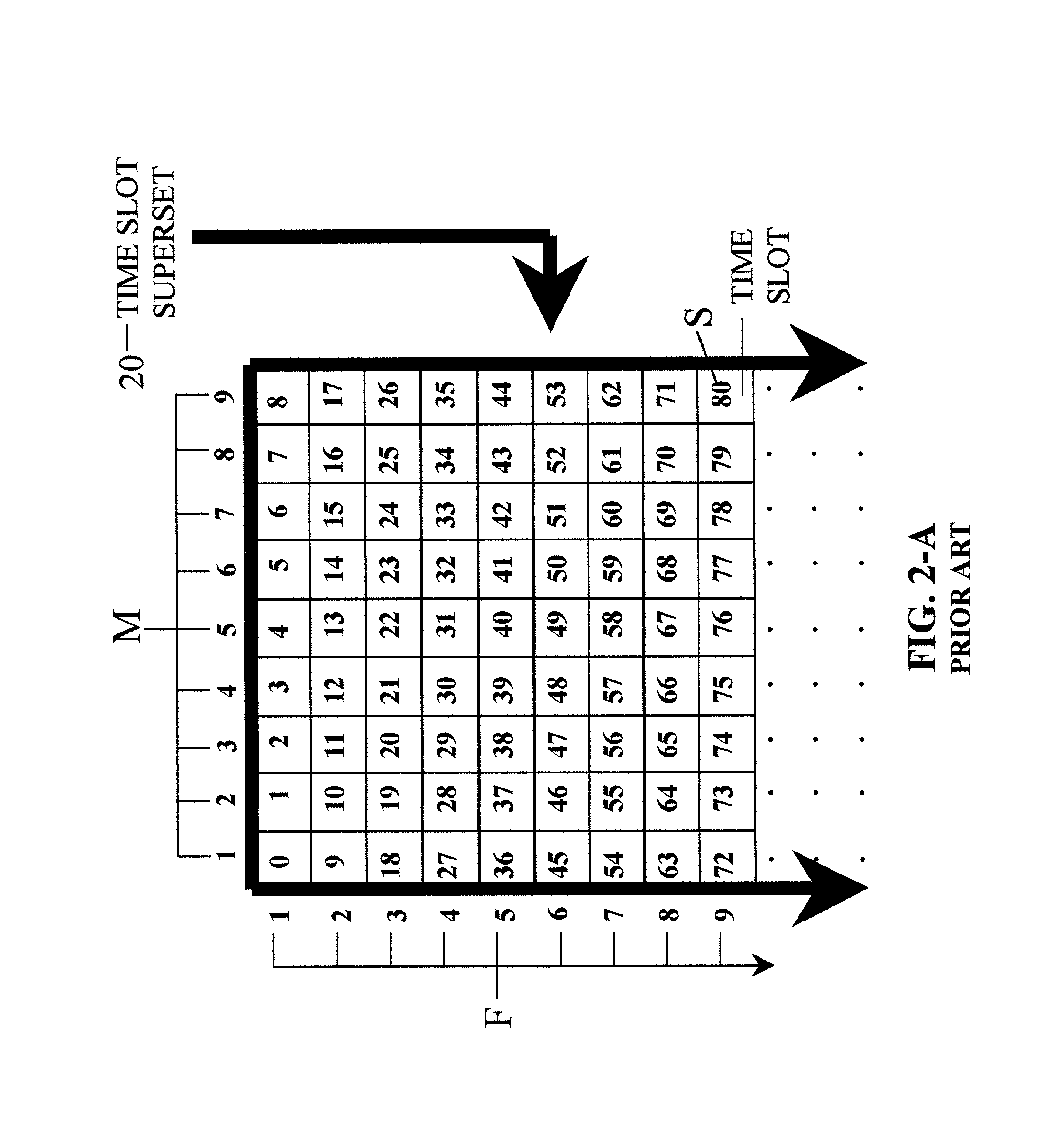Method for dynamically allocating time slots of a common TDMA broadcast channel to a network of transceiver nodes
- Summary
- Abstract
- Description
- Claims
- Application Information
AI Technical Summary
Benefits of technology
Problems solved by technology
Method used
Image
Examples
Embodiment Construction
[0034]FIG. 2-A shows the first 80 time slots of a time slot superset 20 belonging to a common Time Division Multiple Access (TDMA) channel. A time slot is uniquely identified by its sequence number S. Alternatively, a time slot can be uniquely identified by the pair (M, F), where M is the time slot's circular sequence number (column number in FIG. 2-A), and F is the time slot's frame sequence number (row number in FIG. 2-A). A time frame is defined as a group of 9 consecutive time slots. In FIG. 2-A, each row of time slots is a different time frame.
[0035]The sequence number S and the circular sequence number M of a particular time slot are related by the following equation:
M=Modulo[S / 9]+1 (1)
M is a time slot sequence number that resets to 1 every 9 consecutive time slots. The maximum value of M is equal to the length (in slots) of the time frame. F is incremented every time M is reset to 1, which signifies the beginning of a new time frame. The sequence number S and the frame seque...
PUM
 Login to View More
Login to View More Abstract
Description
Claims
Application Information
 Login to View More
Login to View More - R&D
- Intellectual Property
- Life Sciences
- Materials
- Tech Scout
- Unparalleled Data Quality
- Higher Quality Content
- 60% Fewer Hallucinations
Browse by: Latest US Patents, China's latest patents, Technical Efficacy Thesaurus, Application Domain, Technology Topic, Popular Technical Reports.
© 2025 PatSnap. All rights reserved.Legal|Privacy policy|Modern Slavery Act Transparency Statement|Sitemap|About US| Contact US: help@patsnap.com



